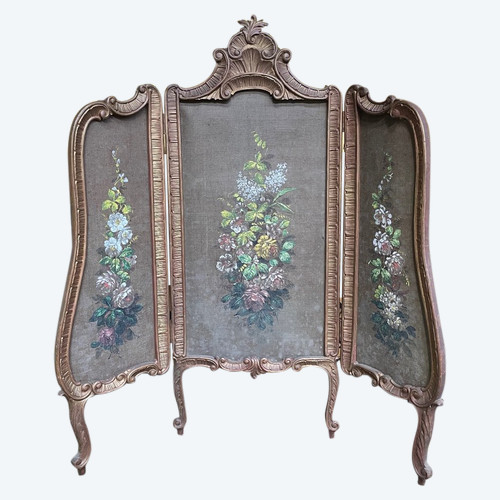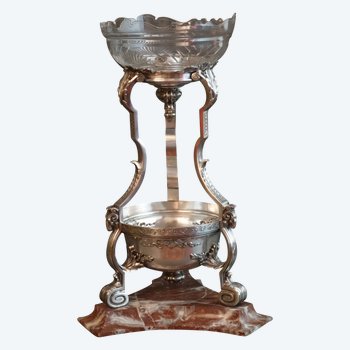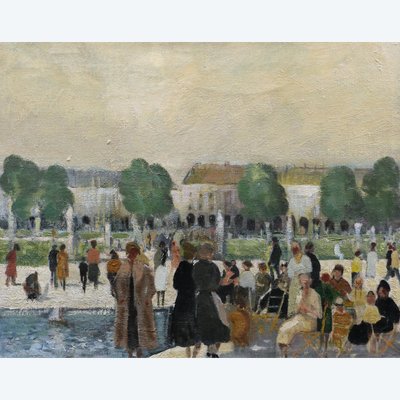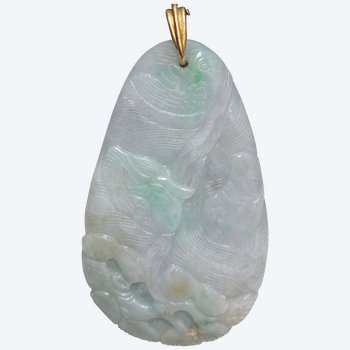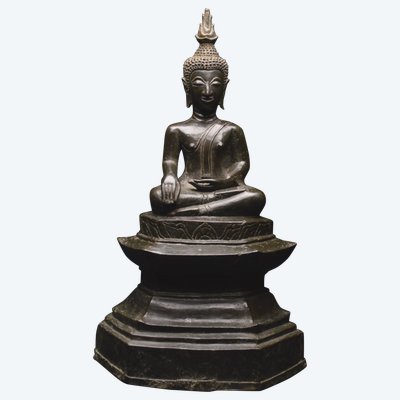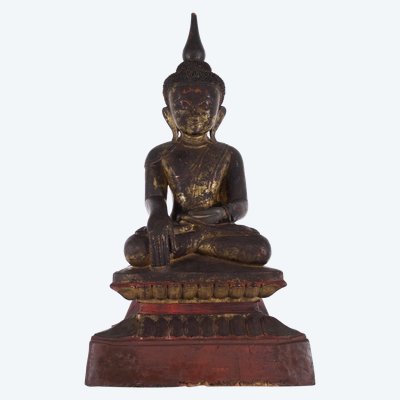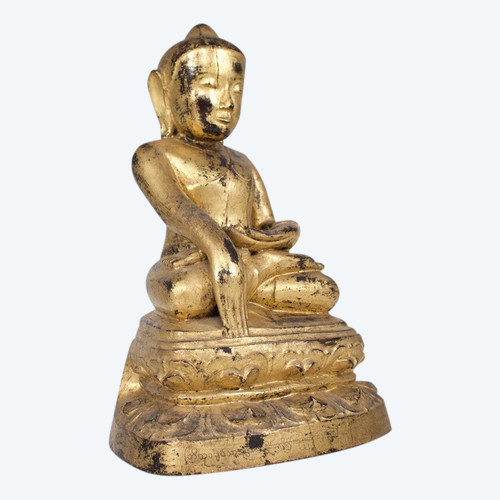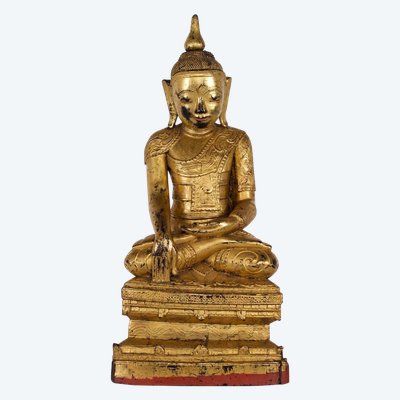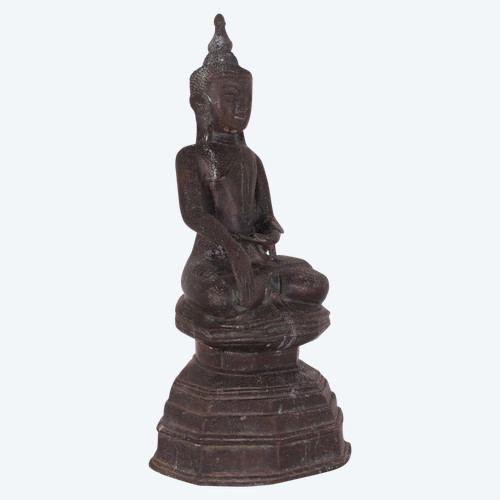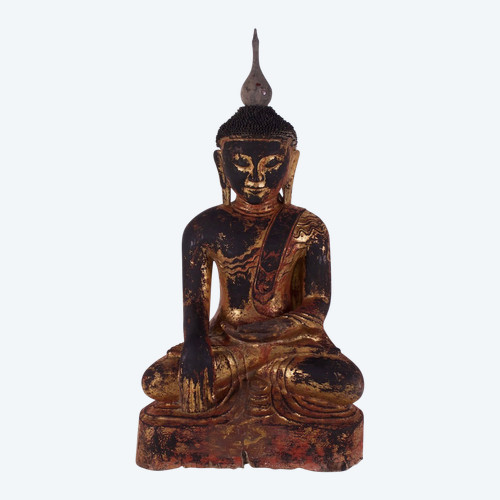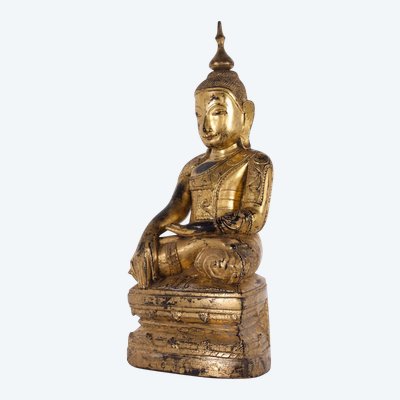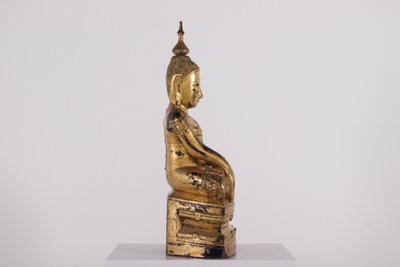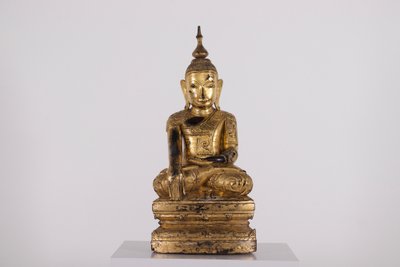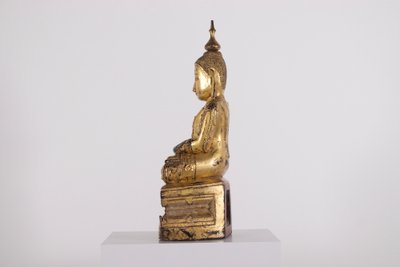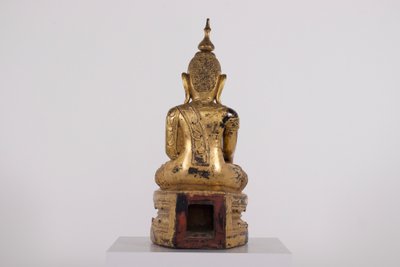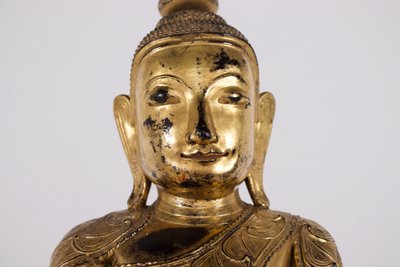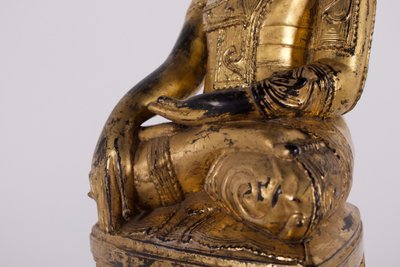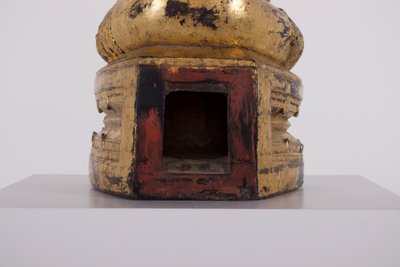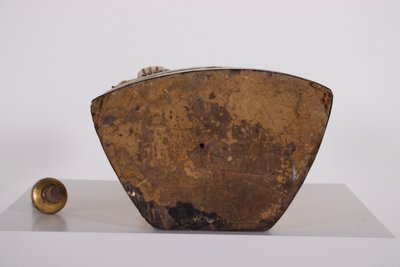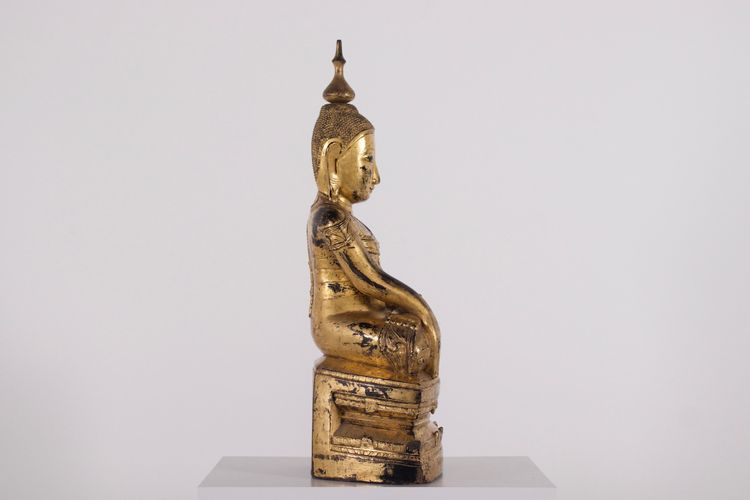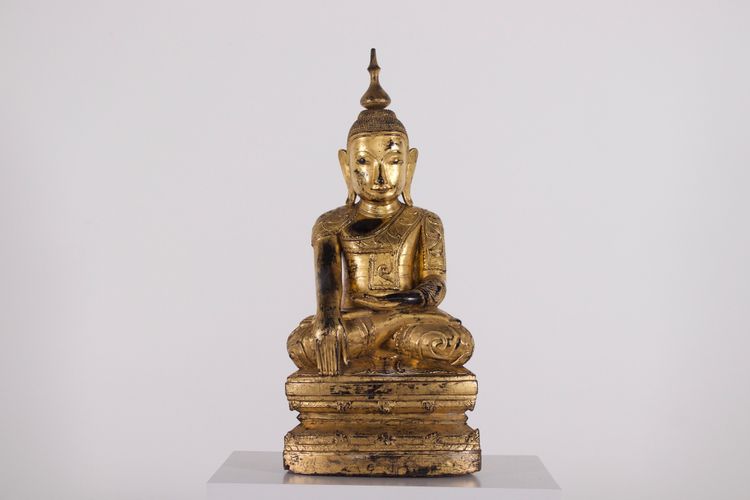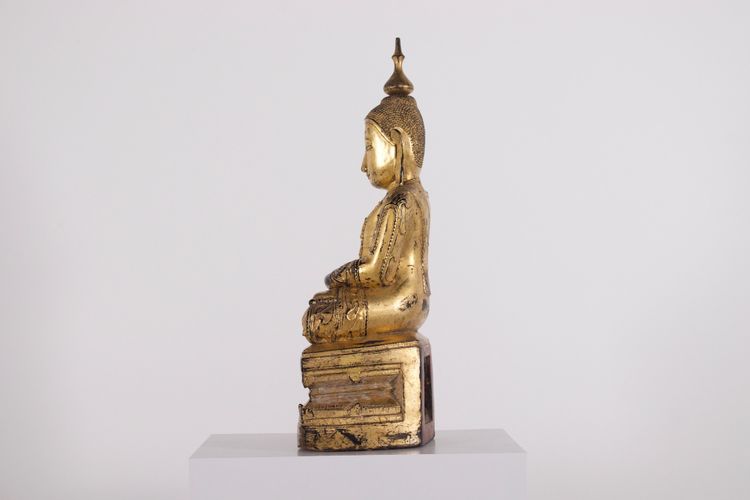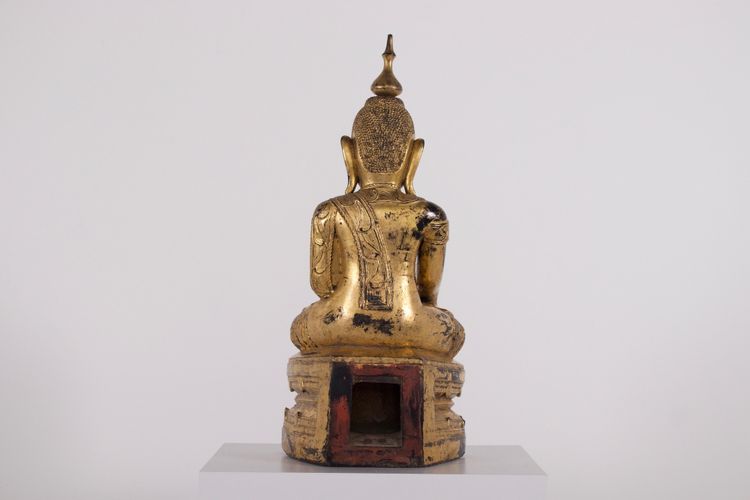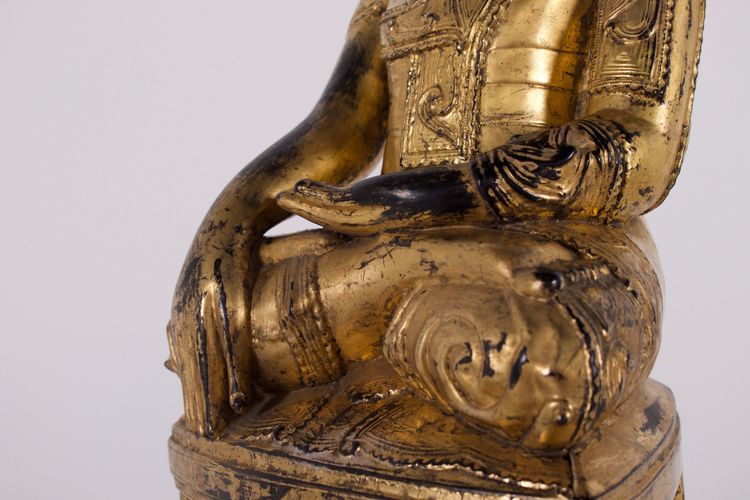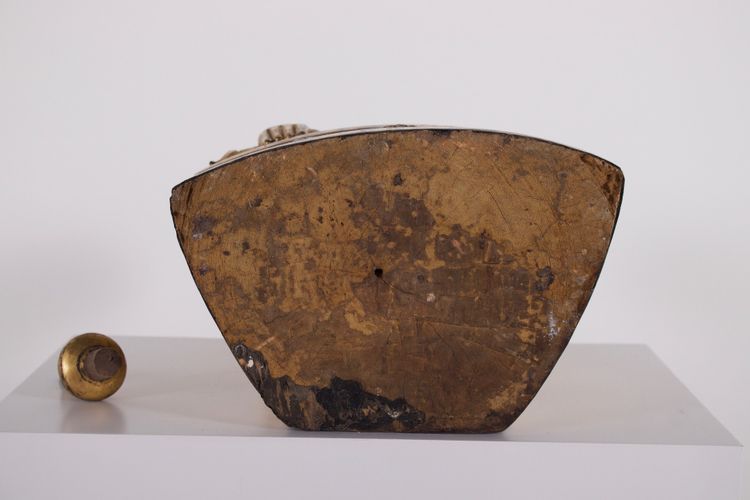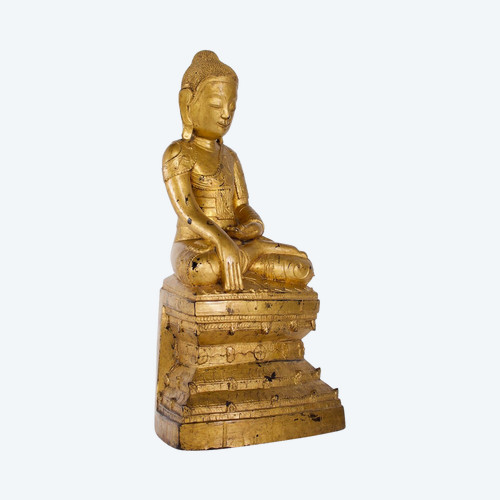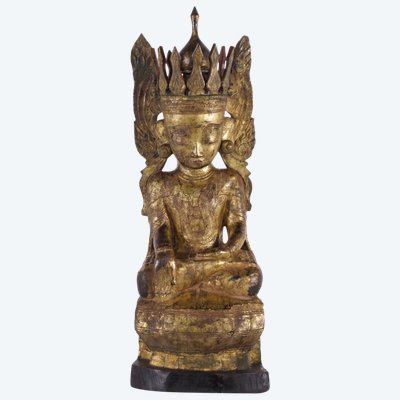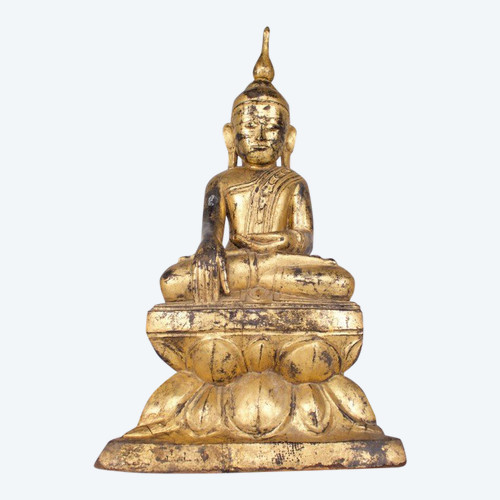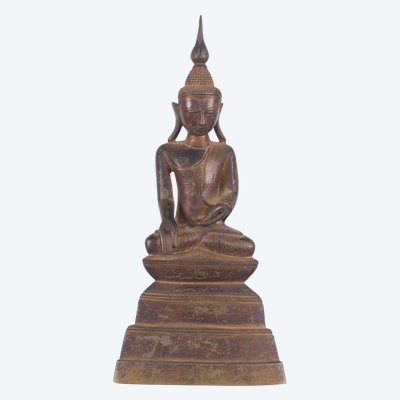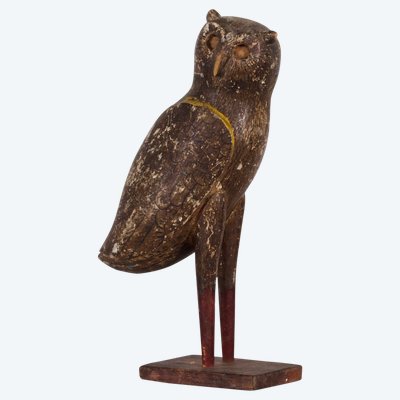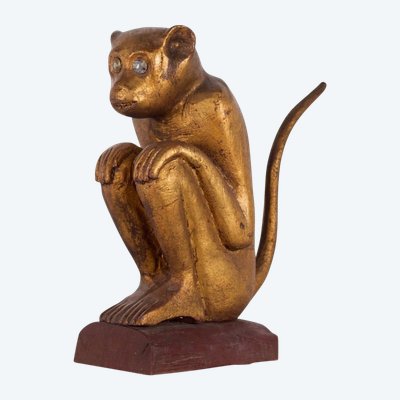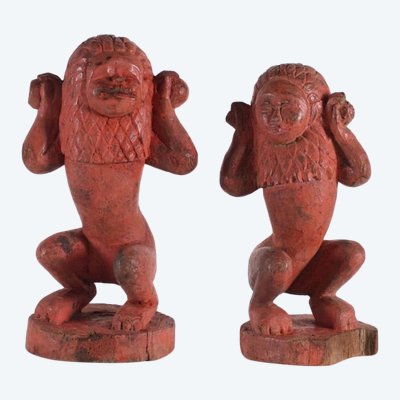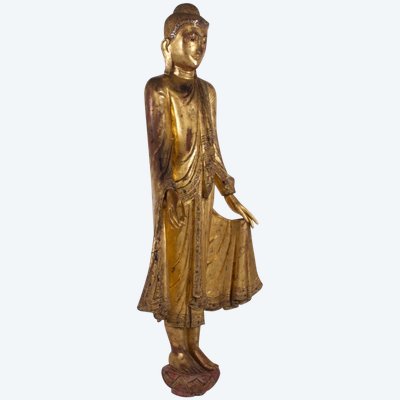This description has been translated and may not be completely accurate. Click here to see the original
Large Maravijaya Buddha, Burma (Myanmar), late 19th century, Konbaung / Mandalay period.
The Awakened One is depicted in vajrasana on his stylized double lotiform base, his right hand calling upon the Earth goddess to bear witness to his awakening and victory over Mara.
Carved wood, black lacquer and gilding.
Beautiful alternating black lacquer and gilding over the entire image, which is very well preserved.
Provenance: Succession Claude de Marteau.
Sold with certificate of provenance.
In Theravāda Buddhism, particularly in Thailand and Burma, the posture of the seated Buddha taking the earth as witness is one of the most emblematic representations of the tradition. This posture, known as bhūmisparśa mudrā (gesture of taking the earth as witness), symbolizes the Buddha's awakening under the Bodhi tree at Bodhgayā.
In Theravāda iconography, this position is omnipresent, particularly in Burmese and Thai statues. Buddha is depicted in a meditative posture, legs crossed in the lotus position, his left hand resting on his knees in a gesture of concentration, while his right hand touches the ground with its fingertips. This gesture evokes the moment when Siddhārtha Gautama, faced with the onslaught of the demon Māra, invokes the earth as witness to his merits accumulated over the course of his past lives. According to tradition, the earth itself responds by unleashing a flood that sweeps away Māra's forces, thus sealing the Buddha's victory over delusion and his access to enlightenment.
In Thailand, this posture is particularly associated with the iconography of Sukhothai and Rattanakosin-style Buddhas, where it is often depicted with slender forms and a serene expression, accentuating the idea of transcendence and spiritual purity. In Burma, notably in the Mandalay and Konbaung styles, the same posture is ubiquitous, but statues often feature a more rounded, benevolent face, with meticulous details on the folds of the garment and the ornamentation of the base.
This iconography expresses a fundamental aspect of Theravāda Buddhism: the importance of the pāramī (perfections) accumulated by the Buddha through his previous lives and the primacy of karma in the path to enlightenment. Unlike the Mahāyāna and Vajrayāna traditions, where Buddha is often depicted in transcendent forms or adorned with esoteric symbols, Theravāda favors a pared-down, didactic approach, centered on the historical example of Gautama Buddha. In this way, the posture of taking the earth as witness becomes a constant reminder to devotees of the power of merit and the determination required to attain liberation.
See this Burmese Maravijaya Buddha in full screen mode on Vintage Adidct
Ref: AFRKP68AHK
 Louis XV Style Firewall Or Screen
900 € EUR
Louis XV Style Firewall Or Screen
900 € EUR
 CHINESE carved jade and gold pendant
780 € EUR
CHINESE carved jade and gold pendant
780 € EUR

